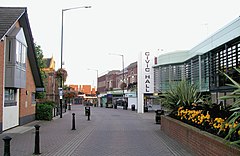Powerflush nearby to Bedworth

 Power flushing is a cleaning technique for central heating systems, aimed at removing sludge, debris, and contaminants that can impede efficiency or cause failure.
Power flushing is a cleaning technique for central heating systems, aimed at removing sludge, debris, and contaminants that can impede efficiency or cause failure.
A specialised machine pumps chemicals at high pressure to dissolve blockages, enhancing performance. Indicators for a power flush include frequent radiator bleeding, cold areas at radiator bottoms, abnormal noise, and recurrent boiler problems. The procedure, costing £300 to £500, involves a ‘pumping station,’ water flushing, sludge dislodging with an ‘agitator,’ chemical flushing, and an ‘inhibitor’ to prevent future issues.
It may not be suitable for systems over 20 years old or with rusty parts, as leaks may occur. A professional assessment is essential to determine if power flushing is the right approach, offering long-term benefits like efficiency improvement, extended boiler life, noise reduction, and reliability enhancement.
Bedworth is a market town in the Warwickshire borough of Nuneaton and Bedworth. It is located 5 miles (8 kilometres) south of Coventry and 3 miles (5 kilometres) north of Nuneaton.
The town had a population of 30,438 according to the 2011 census.
Check this out for cleaning out rust in these postcode areas:
- CV12
HISTORY
Bedworth was first mentioned in the Domesday Book of 1086 as Bedeword, a small market town with Saxon origins. The first mention of a priest in Bedworth dates back to 1297. The town suffered greatly as a result of the 14th-century Black Death. In 1590, the town was described as having only 14 families. Bedworth had recovered somewhat as a result of local coal mining by 1730, and it was described as having 260 houses.
Following the passage of the Five Mile Act 1665, which prohibited Nonconformist churchgoers from gathering for worship and preaching within five miles of a corporate town like Coventry. Bedworth, which is exactly five miles from Coventry, became a local centre for Nonconformists who gathered there. Reverend Julius Saunders founded the Old Meeting congregation just north of the five-mile post in 1686. An old plaque from the mile-post can still be seen on the Almshouses’ gate post. A Presbyterian Nonconformist chapel, now owned by the United Reformed Church, was built here in 1726 and was restored in 2012.
Bedworth grew into an industrial town in the 18th and 19th centuries, owing largely to coal mining and the spillover from nearby Coventry’s ribbon weaving and textile industries: Coal mining in the area, which is located on the Warwickshire coalfield, was recorded as early as the 13th century, but grew to a large scale as a result of the industrial revolution. The industry peaked in 1939, when there were 20 pits producing over 5.8 million tonnes of coal in the area. Bedworth’s last colliery, Newdigate Colliery, closed in 1982, and Coventry Colliery on the outskirts of town closed in 1991. The ribbon weaving industry was introduced to the area by French Huguenot immigrants in the 18th century and thrived for nearly a century before being largely wiped out in the 1860s as a result of the Cobden–Chevalier Treaty, which removed tariffs on imported French silks, causing enormous hardship to the town. Hat making, on the other hand, grew and largely replaced the ribbon trade, lasting until the 1950s.
The Coventry Canal, which opened in 1789, and the railway, which opened in 1850, aided the town’s growth.
Bedworth became a civil parish in the Foleshill Rural District in 1894. Bedworth was incorporated as a separate urban district in 1928. Exhall and parts of Foleshill, Astley, and Walsgrave on Sowe parishes were added to the urban district in 1932. Bulkington was added in 1938, expanding it even further. In 1974, the Bedworth Urban District merged with the Municipal Borough of Nuneaton to form the Nuneaton and Bedworth Borough.
GEOGRAPHY
Bedworth is located 101 miles (163 kilometres) northwest of London, 19 miles (31 kilometres) east of Birmingham, and 17 miles (27 kilometres) north northeast of Warwick, the county town.
Bedworth is divided into six main suburbs: Collycroft, Mount Pleasant, Bedworth Heath, Coalpit Field, Goodyers End, and Exhall. Exhall is a catch-all term for the area around M6 Junction 3 that includes parts of both Bedworth and Coventry. The large village of Bulkington is approximately 1.5 miles (2 kilometres) to the east of Bedworth, and the village of Ash Green is approximately 2 miles (3 kilometres) to the south-west, separated by a short gap.
Bedworth is adjacent to Coventry and is included in the Coventry and Bedworth Urban Area.
The Sowe River rises in Bedworth and flows through Exhall, northern and eastern Coventry, Baginton, and Stoneleigh before joining the Avon River south of Stoneleigh.

